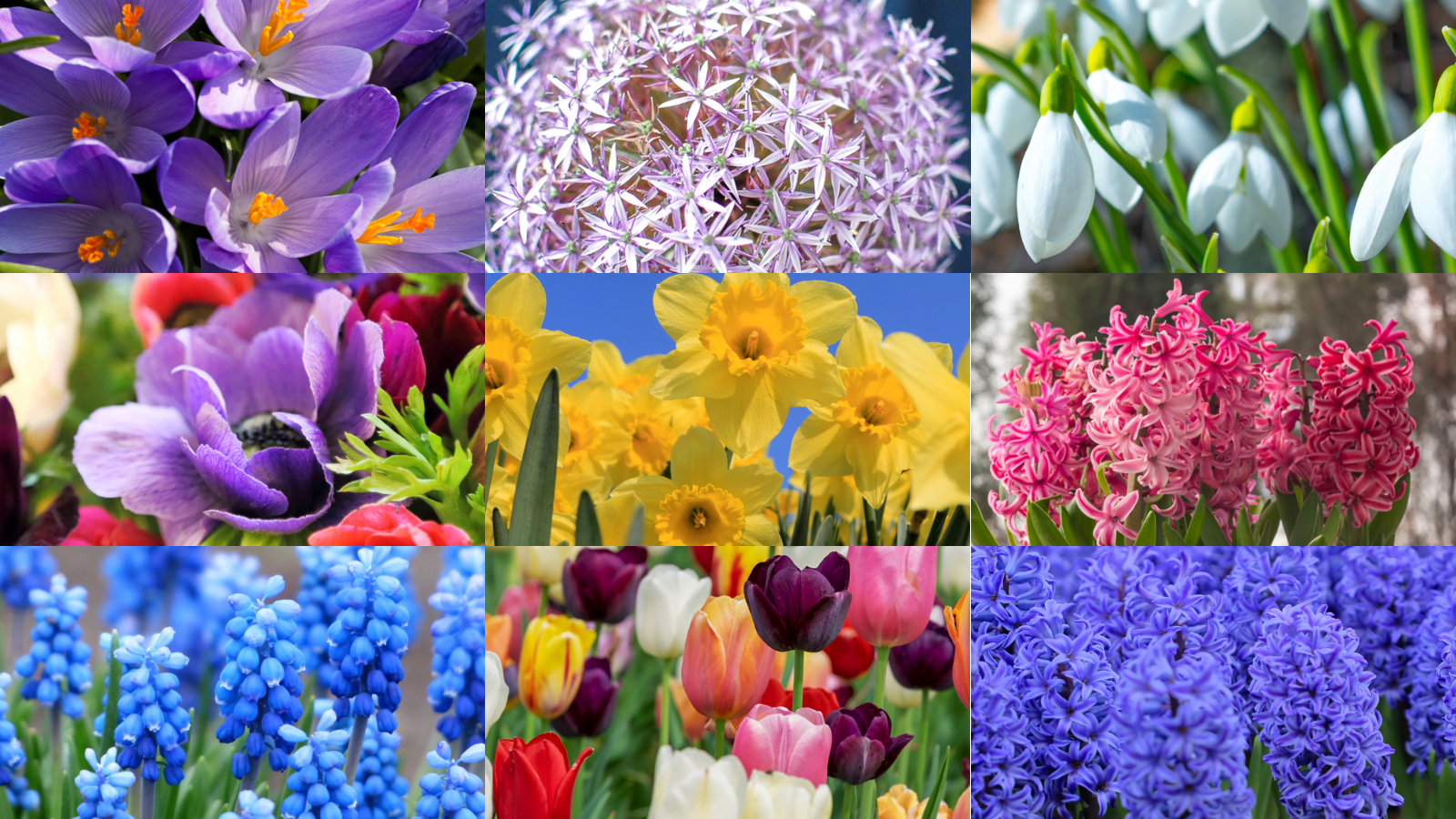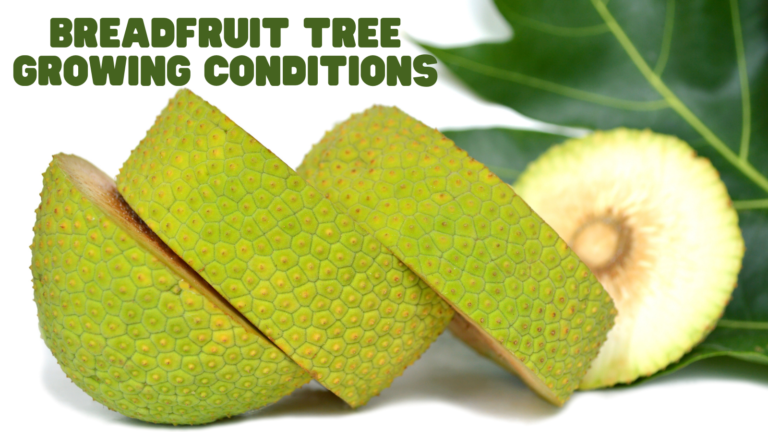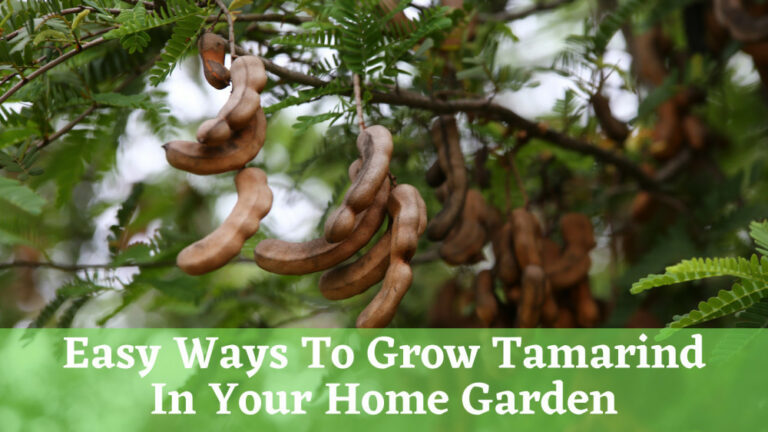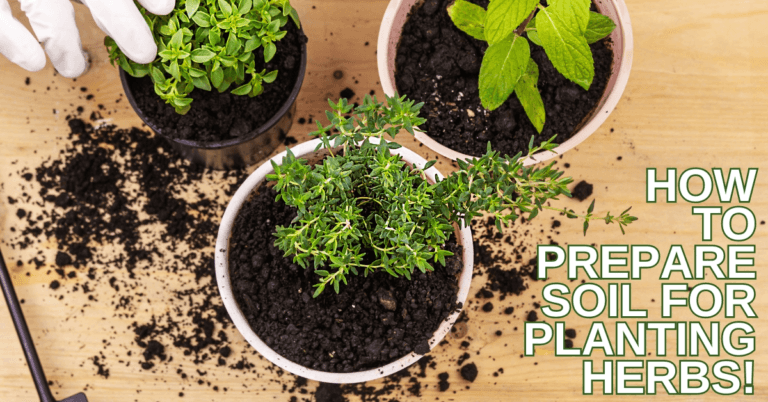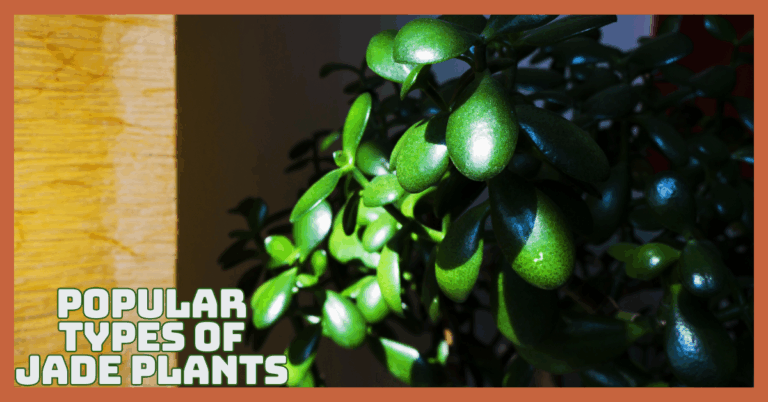Best Spring Bulbs To Grow
Best Spring Bulbs To Grow
Perennial bulbs “will reliably reappear for three to five years before fading away.” By definition, most bulbs are perennials.
However, not everyone will return willingly year after year in every situation.
Which bulbs will perform the best over time in any given environment depends on various factors, including soil, climate, and other factors.
Those bulbs that “accommodate themselves entirely to their new places, feeling so at home that they proliferate organically, on their own, growing in number year after year” are “naturalizing bulbs.”
Once planted and established, naturalized bulbs will come back year after year, frequently multiplying, to bring additional seasons of delightful spring splendour.
Size matters when it comes to bulbs! Choosing the best-looking, largest spring bulbs is the surest approach to producing planting plans that seem polished.
Your plants will be bigger, better, and more robust, and the flowers will surpass all of your standards in terms of colour and duration.
The Long History Of Bulbs
While autumn offers incredible seasonal variety, some people are already looking forward to spring.
In October or November, when summer is safely out of reach, and the annual frost is right around the corner, bulbs can be planted and prepared.
Bulbs have evolved to nestle underground to preserve their vital energy and nutrients during the winter's hibernation so that they can resurface and flourish in the spring.
When a large component of a plant's anatomy remains underground, it is referred to as a storage organ or a geophyte.
A plant's life-preserving mass is buried well out of sight, making it less vulnerable to natural predators like grazing herbivores and lousy weather.
Bulbs can propagate underground in addition to surviving. The plant produces a smaller bulbil or bulblet, which grows into a new bulb by utilizing the larger bulb's root system, nutrients, and energy. Some species, including the onion and garlic genus Allium, produce bulbils in the flower's head. Thus, this is not entirely unexpected.
Angiosperms, or flowering plants, first appeared about 125 million years ago when the planet acquired the instinct and resourcefulness to use bright, appealing flowers for reproduction.
To reproduce, bulbs use pollination to produce seeds that can take up to seven years to develop into their bulbs and bloom. As a result, bulbs also flower.
Get the bulbs ready indoors if you don't have a garden outside to plant them in. Buy a few bulbs this fall; hyacinths and narcissus make excellent starts.
They place the bulb on a pile of clean marbles or pebbles that have been half-filled in a mason jar.
Then add water to the jar until it barely touches the light bulb's base. For 10–12 weeks, store in the refrigerator. Over this time, you'll notice the formation of roots, so replenish the water when it evaporates.
Please take out your bulb jar and keep it in a warm, dark place for a few days until you notice a growing point. Place it on a sunny windowsill after that.
During winter, the bulb will bloom, bringing springtime indoors. Cut off the growth once the bulb has finished its life cycle, faded, and turned yellow, then locate a location outside to plant it.
Best Spring Bulbs
Nothing is more welcoming for gardeners who have spent the entire winter longing to see green again than the appearance of early spring blooms.
And few plants are as simple to grow as bulbs that bloom in the spring. They sow in the fall, then you wait. Being patient is difficult. Bulbs that bloom in the spring begins to grow nearly immediately.
They can continue to grow slowly throughout the winter after putting down roots in the fall. Because of this, it's critical to start them out on the right foot.
Pick a location that will receive lots of sunlight in the spring. When planting, mix some organic materials and bulb food or bone meal. Until the ground freezes, make careful to keep them watered.
1. Crocus
Although there are more than 80 different species of Crocus, most people plant a mixture of hybrids without giving it any thought. The hybrids typically bloom a little later and are a tiny bit bigger.
The Crocus, though, is still one of the spring flowers that bloom first, frequently, while snow is still on the ground. The crocus flower is a fantastic choice for landscaping or grass planting. Additionally, they are exceedingly simple to force or grow in containers.
2. Daffodils
Narcissus, or daffodils, require less care than you will. They require less care to survive longer than you will. Rodents and deer avoid them. They require less care than you will, and many have fragrant flowers. Even some daffodils don't need chilly temperatures.
3. Siberian Squill
In the spring, it's difficult to overlook a naturalized drift of blue Siberian squill (Scilla Siberia). Because they will plant them where they have lots of space to roam; fortunately, the foliage is low and delicate, so you won't have to observe it deteriorate for several weeks after the blooms have vanished.
Watch as your yard transforms into a river of blue by planting them on the lawn, along walks, behind trees, and in rock gardens.
4. Snowdrops
A plant that makes its way through the snow-covered ground is indescribably adorable. Snowdrops (Galanthus), despite their deceptively delicate appearance, can withstand frigid temperatures and strong winds and continue to blossom.
They have a long lifespan and tend to form well-behaved clumps, but they also disperse via seed and can be found in unexpected locations.
5. Tulips
The arrival of tulips (Tulipa) in bloom signals the beginning of summer. They are among the most adaptable spring flowers and look their best between April and May. The most exotic range of colours, as well as a variety of flowering heights and styles, may be found in tulip bulbs.
There is always a tulip variety to match your planting schemes, whether you have a fully developed rustic garden mix or a modern, contemporary, or minimalist garden. Furthermore, the garden's bouquet of recently plucked tulips looks lovely indoors.
6. Hyacinths
Hyacinths have a seductive fragrance that is difficult to match when it comes to spring bulbs with scents (Hyacinthus). You can smell the powerful aroma from these blossoms throughout the garden!
These influential performers produce plump drumsticks of flowers in every rainbow colour and are bold and gorgeous. Choose top-size hyacinth bulbs for plants with a robust, upright habit and blooms that endure for several weeks.
Hyacinths thrive happily in pots or borders and are hardy and straightforward to grow.
Hyacinths are a must-have for anyone who enjoys having flowers around the house, and they are simple to grow in indoor containers. They'll smell considerably better than any air freshener and look fantastic!
Many tiny, aromatic, tubular blossoms make up the hyacinth's (Hyacinthus orientalis) large, puffy flower heads. You're sure to detect a lily family resemblance when you examine each one closely and inhale its intense perfume. Lilies make up the family of hyacinths.
It's good that hyacinth blooms bloom in time to blend with daffodils and tulips since they have hues that many other bulbs lack (blues and purples).
7. Alliums (Ornamental Onions)
From late spring to mid-summer, alliums are perfect flowers for adding vibrant colour to the yard. This timing is beneficial for extending the colourful season into summer, taking over from early blooming spring bulbs as they start to decline, and preventing the post-spring colour letdown!
Additionally, they deliver it with a powerful punch. These vivid balls of colour, which have powerful, architectural looks, add structure and contrast to any planting arrangement.
When planted in huge groupings, they look pretty stunning, but you can obtain a completely different effect by scattering them around borders, where they can gently bob above nearby types.
Allium bulbs come in various sizes, ranging in height from 30 cm to hardy giants that can grow to be about 1.5–2 m tall. They are also fully sturdy and straightforward to produce. These stunning flowers put on an outstanding performance in the yard and also make great cut flowers.
Allium bulbs come in various sizes, ranging in height from 30 cm to hardy giants that can grow to be about 1.5–2 m tall.
They are also fully rugged and straightforward to produce. These stunning flowers put on an outstanding performance in the yard and also make excellent cut flowers.
8. Iris
Dwarf Irises and Dutch Irises are the two best varieties of spring flowering iris to cultivate. By planting both types, you'll enjoy their abundant, exotic-looking blooms at various points throughout the season.
Each year, between February and March, dwarf irises (Iris reticulata), one of the first spring blooming flowers, poke their heads above the ground. These adorable tiny miracles have delicately detailed exquisite blossoms that are small in stature but have a tremendous impression. Planting these little treasures in patio pots, borders, or rockeries is ideal.
Every year, showy blooms in various opulent colour tones flower quickly and persistently, growing into more extensive and stunning clusters.
Dutch iris bulbs unquestionably put up a spectacular display in the garden, and florists praise them for their lengthy vase life and intricate flower forms.
9. Bluebells (Hyacinthoides)
Although many different kinds of bluebells exist, our favorite local variety is the traditional English Bluebell (Hyacinthoides non-scripta).
Sometimes it takes several years for bluebell bulbs to grow, but once they do, you're in for a great treat.
English bluebells are easily recognized by their characteristic, slender, arching stems that contain gorgeous, nodding, bell-like blooms that are not only completely attractive to the eye but also a valuable and well-liked source of honey for spring bumblebees and other pollinators.
Once planted, these resilient bulbs naturally naturalize on their own, allowing you to enjoy your blue carpet in beds, borders, or underneath trees or shrubs over time!
10. Anemones
Every year, from mid to late spring, anemones add a vibrant flash of spring colour to beds, borders, or pots, ranging from the typical woodland anemone (Anemone blanda) to more elaborate variants like our Elite Italian variety. Woodland anemones grow well in strong drifts in borders and come in a variety of lovely pastel colours that make them ideal for underplanting trees or shrubs.
The larger, hybrid forms are better suited for growing through grass or in sunny borders and patio planters. Although some people refer to them as anemone bulbs, these attractive blooms are produced from corms and are pretty simple to plant. The nugget-like bulbs are the ideal, dependable choice for a beginner because they can be planted in bunches and permitted to grow.
11. Grape Hyacinths (Muscari)
Grape hyacinths and Muscari are the ideal low-growing spring bulbs for laying down a thick carpet of colour in beds and borders. These uncomplicated little grape hyacinth bulbs are highly effective and straightforward to manage. They bloom in the middle of spring every year and rapidly become naturalized to create a stunning carpet of colour.
These intricate small flowers have a naturally attractive appearance and nectar-rich blossoms that will draw bees and other helpful pollinators, making them perfect for a cottage-style or wildlife garden. Muscaris are typically blue, but now you can also find white and pastel-pink versions!
Benefits Of Planting Spring Bulbs
Bulbs are a simple and affordable way to add stunning colour to your landscape in the spring and summer. Flowering bulbs must draw on a reserve of energy and food to grow roots, leaves, and blooms while becoming naturalized and developing into vibrant displays. Perennial bulbs are advantageous for gardens because of their autonomous annual beauty.
The simplicity of usage of bulbs is one of the most common causes of this. Most bulbs are shipped ready to grow and don't have any specific soil requirements.
Try them in pots, under trees, or even on your lawn for an interesting and exciting summer ground cover or a burst of spring colour.
Nothing quite captures the spirit of spring like a bed of vibrant tulips, a hill of yellow daffodils, or a swath of purple Crocus.
When spring flowers start poking their heads through the earth, the gloomy days of spring are cheered. Try these spring-blooming favourites:
- Snowdrops thrive in forested regions, rock gardens, and naturalized landscapes. They feature delicate white blossoms in the early spring.
- Flowers on crocuses are white, yellow, and purple. They grow naturally in lawns, perennial gardens, or even in the ground beneath plants, bringing brightness to the drab spring days.
- Daffodils consistently display early spring colour.
- Tulips are available in many hues, which go well with other popular spring bloomers, including bleeding hearts, primroses, and violas.
- Hyacinths are ideal for pots and come in various colours that blend delightfully with tulips and daffodils.
- Allium, which may grow between late spring bulbs and early summer perennials, comes in a type with enormous purple globe flower heads.
- Rich colour and beautiful form are two qualities that make the Dutch iris popular.
- Cobalt bluebells on grape hyacinths or Muscari have a sluggish opening, so the flowers persist for weeks. Muscari looks fantastic planted in mounds by themselves or with tulips and daffodils, under trees, in flowerbeds, or containers, and they naturalize well.
Every flower bulb has a specific blooming season and ideal planting period. The bulbs need to be planted in the fall for blossoms the following spring if you wish to grow tulips, daffodils, or alliums that bloom in the spring.
Dahlias, calla lilies, and gladiolas are a few examples of summer-blooming bulbs planted in the spring for summer and fall blooms.
Amaryllis and paperwhite bulbs are planted in the early winter to provide interior blooms in the middle of the cold season. Almost every month of the year, flowering bulbs can give colour, scent, and beauty.
Over typical plants, flowering bulbs have a significant benefit in that they can store energy for use during subsequent growing seasons.
The bulb uses these reserves as it grows to create roots, shoots, leaves, and flowers. Flower bulbs don't need to wait for optimal weather or soil conditions because they are self-sufficient.
They are already well-equipped to survive by nature. The packaging of flower bulbs is ideal for simple planting.
Drill a hole and insert the lightbulb. The majority of bulbs don't give their planting location any thought.
In addition to flower beds, the ground beneath trees and shrubs, forests, meadows, and even lawns, will flourish in pots and other containers.
It is possible to grow flower bulbs without additional tools. Having any specialized training or understanding to plant flower bulbs is unnecessary. Plant the bulbs, then watch for the flowers to appear.
Time To Plant Spring Bulbs
It is best to plant spring-flowering bulbs in September and October while the soil is still warm so the bulbs can establish themselves and grow roots before going dormant in the winter. Tulip bulbs are an exception to this rule, as they benefit from planting in November to stave off the fungus tulip fire. However, you may typically still successfully plant spring bulbs as late as December.
Some might emerge “blind” (without blossoms) in their first year, while others might bloom a little later than typical. But winter bulb planting can produce excellent results with solid and healthy-looking bulbs. But make sure to plant your spring bulbs by January.
Spring bulbs can be planted immediately into borders and containers. Bulbs should generally be planted at a depth around three times their size. If your soil is thick, mix in some horticultural grit before planting spring bulbs because they typically require sun or partial shade and free-draining soil.
Conclusion
The epitome of spring is a field of daffodils that have grown naturally or a flower bed full of tulips in vibrant colours.
Bulbs that bloom in the spring put on a fantastic display, bringing colour to gloomy, frigid days. Summer-blooming bulbs create some of the garden's biggest and most spectacular flowers.
One dahlia plant can produce a dozen or more flowers every week from summer through fall, and an Oriental-Trumpet lily can grow to be 7 feet tall and have 20 or more fragrant blossoms per stem.
Amaryllis bulbs produce enormous, vividly coloured blooms indoors over winter, using only water and a little sunlight.
I trust you enjoyed this article on the Best Spring Bulbs To Grow. Please stay tuned for more blog posts to come shortly. Take care!
JeannetteZ
>>>Please click here to read my all-inclusive article about Container Gardening<<<
>>>Are you interested in homegrown herbs and medicine? Please click here to find out more about it!<<<
Your Opinion Is Important To Me
Thoughts? Ideas? Questions? I would love to hear from you. Please leave me your questions, experience, and remarks about this article about the Best Spring Bulbs To Grow in the comments section below. You can also reach me by email at Jeannette@Close-To-Nature.org.
Disclosure
This post may contain affiliate links. As an Amazon Associate and other affiliate programs, I earn from qualifying purchases at no extra cost to you. Read my full affiliate disclosure.
You might also enjoy these blog posts:
Best Steps To Grow Grass In Containers
Best Steps To Grow Mushrooms In Containers
Best Steps To Grow Ocra In Containers
Best Steps To Grow Drumstick Alliums In Containers
Best Steps To Grow Ylang In Containers

